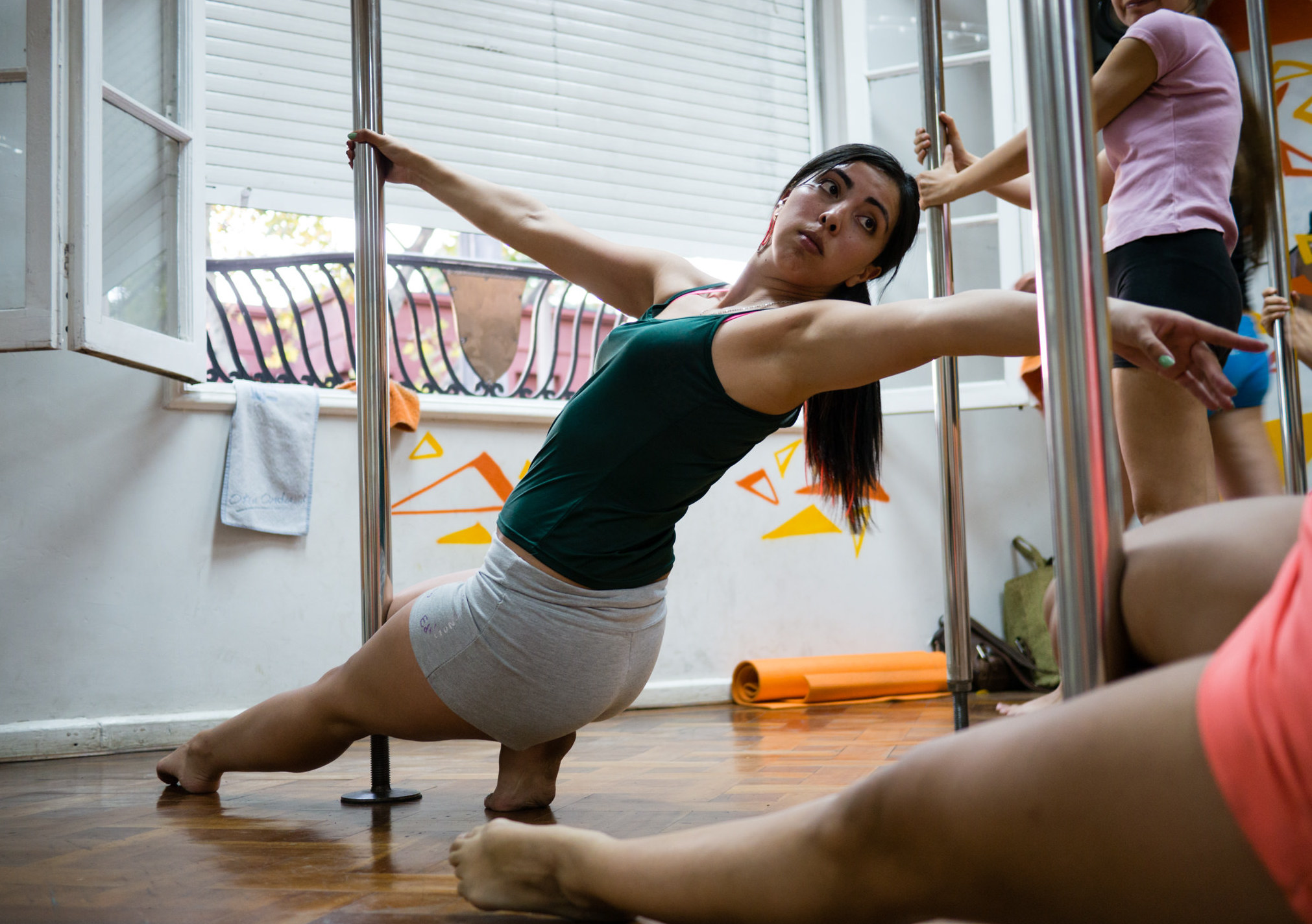How I Found Empowerment In The Pole Fitness Community
Don't knock it til you try it.

Here I am again: barely clothed, red faced, working up a sweat and contorting my body into unthinkable positions. I leave with bruises, burns, aching muscles and sometimes the odd sprained wrist. Yep – pole dancing is a demanding sport.
Since I was four years old I went to weekly ballet classes, and as I got older I undertook more styles like funk, jazz, contemporary and pointe. One day I decided I wanted to push my limits even further so I signed up to pole dancing classes.
A Damn Skilful Sport
Pole dancing has become a dynamic fitness craze for any age, gender or preference, both competitively and recreationally. Pole performing is even being considered as an Olympic sport, concreting its place in the sporting world.
Bethany Finlay is a competitive pole dancer, and currently holds a lot of prestigious titles. She says, “I pole full time, I run a studio and compete, as well as travel to run workshops at other studios”. Her decision to start poling was so her and her sister could do something fun together, and this decision has led her to become one of Australia’s best. Bethany also highlighted that all forms of people pole for countless reasons. Some people to lose weight, some to socialise, and others just to be part of an evolving sport. This includes boys, girls, non-binary, young and old; it’s the nature of pole fitness.
Pole Goals
No one starts pole being amazing. You develop strength, courage and skill over time just like any other sport. But having the determination to nail a ‘backward crucifix’ distracts from the fact that you’re actually getting a whole-body work out. When you finally achieve a ‘sleeping beauty’, ‘violator’, ‘death drop’ or other elusive trick you’ve been working on for a month, you’ll get to see all your hard work pay off, snap a great Insta pic, and start work on the next one. This trick-by-trick learning process is the foundation of a pole routine, and exemplifies the dedication needed to become a pro.
“If it feels like your back is about to snap in half, then you’re doing it right”
Jak Vogele, one of my pole coaches, is a seven-foot male who has won a number of pole competitions. In a recent class while teaching us a new trick, Jak said, “If it feels like your back is about to snap in half, then you’re doing it right”. This is the sporting side of pole. It hurts like a bitch.
Smashing The Stigma
When I look back over my poling progress I am so proud of what I have achieved in such a short amount of time, but I’m even more impressed with how empowered I have become. We wear short shorts in class simply to grip the pole, so your body insecurities quickly fly away, and we fall flat on our faces time and time again, so there’s no point getting embarrassed.
For the most part, the pole community is a welcoming and encouraging one, with people wanting to help build each other up rather than tearing each other down.
Jak explains that while he found it easy to be accepted into the pole industry itself, he said, “Some people just don’t understand why I would do something like this”. Regardless, he has used the support from his family and friends to develop his pole journey, embracing the stereotypes that may come his way and sometimes even incorporating them in his performances…. Like in waving a dildo in front of the audience with a can of whipped cream.
All in all, pole dancing is an incredibly inclusive and empowering sport that is only increasing in popularity. Self-confidence, courage and both physical and mental strength are all the positive outcomes that inevitably follow pole. If you don’t believe me, why not try it yourself?
(Lead image: Francisco Osorio/Flickr CC)